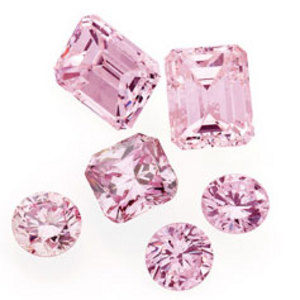Although the number 1.61803… might not not seem that important to you, it actually plays a significant role in our world. This number, the golden ratio, can be found almost everywhere. From the human body, to animals, art and architecture, music, and much more. In this essay, we’ll look at two examples of the golden ratio that are found in the world, and we’ll see why the golden ratio is important and appears in many places.
The golden ratio can be found in one of the latest trends to sweep the nation; widescreen TV’s. Before the 1950’s, all movies had an aspect ratio of 4:3, or 1.33:1. The ratio is found by dividing the width of the screen by the height. Around the 1950’s, the film industry began to worry about the impact of television on theater attendance, and started experimenting with different screen formats with much wider aspect ratios. These ratios were unique because they were beyond the reach of televisions of the time, and arguably more pleasing on the eye. After much experimenting, the film industry settled on two screen ratios: 1.66:1, which is widely used in Europe and Disney animations, and 1.78:1, the format most widely used in the United States. Both of which closely resemble the golden ratio of 1.61:1. As a result, many TV’s are now made that have an aspect ratio of 16:9 to match this “golden” aspect ratio invented by the film industry.1
Another place that the golden ratio can be found is in music. Many classical musicians were also mathematicians, and you can often see examples of the golden ratio in their work. One particular musician is Joseph Schillinger. Schillinger was a music teacher in the 1930’s, in fact, one of his students was Gershwin. He devised a composing method that used the golden ratio and it’s cousin, the Fibonacci numbers. Schillinger determined where the notes came in his music by using the Fibonacci sequence to determine the amount of space in between the notes that he wrote. If you take the space between two notes, and divide it by the space between the previous two notes, then you will get the golden ratio of 1:1.61 or something close.2
What is the reason that the golden ratio is used so much? Many experts say it is because it is aesthetically pleasing. Perhaps it is because a rectangle that represents the golden ratio with its side lengths is similar to our field of vision.3 Either way, interior designers, Elizabeth Feeney and John Hively, say that the golden ratio just ‘feels right. They say, “One of the reasons phi works, Feeney said, is it results in arrangements with a pleasing kind of asymmetry.”4
And they aren’t the only ones that are using the golden ratio in their line of work. For example, ProportionofBlu, a Los Angles blue jean vendor, decided to incorporate the golden ratio into their blue jeans. The company says that the ratio was used to design details such as the curve of the front pocket, the proportions of the rear pocket, and the ratio of the hip stitching to the inseam of the jeans. The company must believe the jeans are aesthetically pleasing, due to the fact that their motto is “Recognizing the inherently pleasing nature of things ‘in the ratio’.” And although there is little evidence to show that the golden ratio has any aesthetic appeal, many continue to use the it, due to the fact that it just ‘looks good.5‘
1Widescreen TV 1. ‘Pictures of the Wide Tomorrow’ by Richard Elen http://www.screenonline.org.uk/tv/widescreen/widescreen1.html
2 NPR ‘The Golden Ratio’ http://www.npr.org/templates/story/story.php?storyId=1191723
3http://www.augusta.k12.va.us/6687125527134429/lib/6687125527134429/Golden_Rectangle.pdf
4Phi design: Arrangements prove calming, inviting Beth Breckenridge, Mary http://search.ebscohost.com/login.aspx?direct=true&db;=nfh&AN;=2W62W6426569939&site;=src-live
5A Golden Sales Pitch Rehmeyer, Julie J. http://search.ebscohost.com/login.aspx?direct=true&db;=mih&AN;=25900974&site;=src-live


